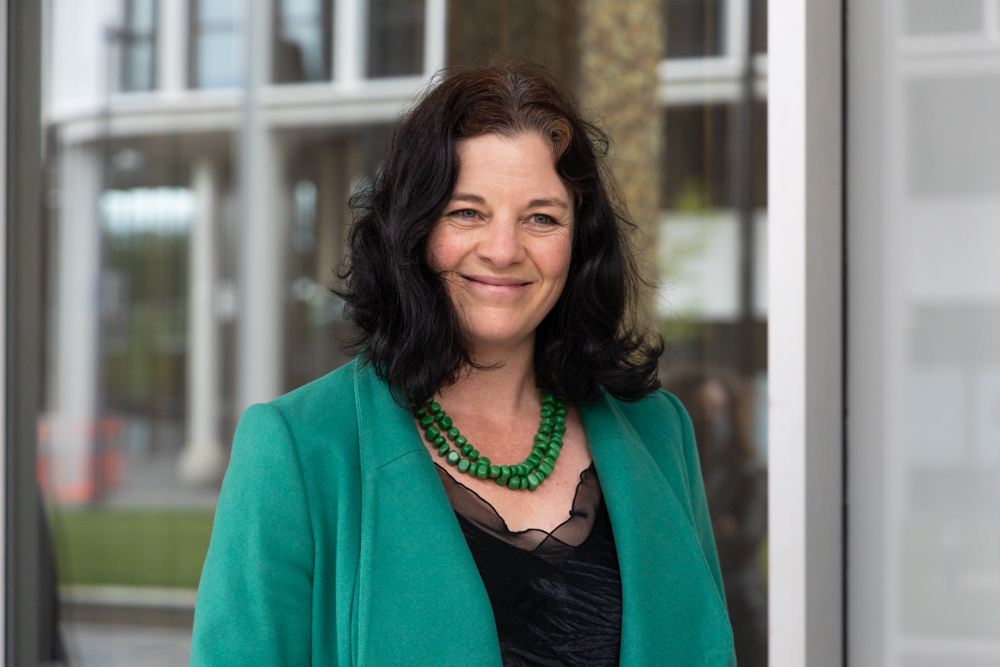Jo Clay MLA is ACT Greens Spokesperson for Women, Transport, Active Travel and Road Safety, Parks and Conservation, Animal Welfare, Arts and Culture, and the Circular Economy.
How do we make sure our cities have the right infrastructure for the future? How do we prioritise what we need in a climate emergency? How do we do all this sustainably?
These decisions require major investment, smart planning, and long-term commitment. They need clear focus on our big problems and our priorities. But governments aren’t always good at making difficult decisions like this.
The Federal Government has recently published its infrastructure review. Under the last Federal Government, the construction pipeline blew out from 150 projects to almost 800. Many of these projects lacked resourcing or a solid business case. Some were pitched heading into an election and were little more than empty promises, hence the importance of this review.
Here in the ACT, we’ve got our own problems. Our Garden City cycle route, Labor’s primary active travel announcement in recent years, was funded two budgets ago. This 12-kilometre bike path is hardly a major project, but it still has no end delivery date in sight. We have thousands of outstanding repairs to footpaths and bike paths. We only recently discovered the extent of the problem because Government completed its first-ever full path audit – treatment that our roads routinely receive.
We’ve committed to an electric bus fleet, but can’t finish the job until we have charging infrastructure. One electric bus depot contract was signed in 2018, but isn’t due for completion until late 2024, and another has quietly slipped off the books altogether.
Currently, we’re rolling out one stage of light rail per decade. Unlike other Australian cities, the ACT had no rail until 2019. This is our first. It is run on 100 per cent renewable electricity and people love using it, but at this rate it won’t service all of Canberra until 2050.
The delays are one problem, but prioritisation is another altogether. We recently held a two-month parliamentary debate about whether to complete a small bus corridor identified in 2016 as a priority project by Infrastructure Australia. Yet five of the six major transport projects receiving Federal funding in the ACT are roads. Only one is public transport, and none support active travel. In a climate emergency, why is our transport funding so skewed?
Costs only get attention when they’re for public and active transport. Roads seem to get a blank cheque, and the $650+ million in our forward budget estimates for road duplications passed with barely a comment. Commonwealth funding for land transport infrastructure is mostly for roads and contains no active transport. Four ACT parliamentary committees have recommended releasing businesses cases and clear methodologies for major road expenditure, and reinstating hierarchies that put active and public transport at the top of our priority list, but I’m yet to see any of these actioned.
The federal review, now released, shows the ACT is $25.6 million better off than before the review, but this additional funding is entirely for road projects. This brings our total Commonwealth contribution to just under $605 million, of which almost $2 is allocated to roads for every $1 for public transport. This was a lost opportunity for the ACT to re-prioritise our infrastructure pipeline to be more sustainable. I’m delighted we’re retaining funding for light rail, but I’m worried about funding for our buses, bike paths, and footpaths. Three in every four journeys around Canberra are still made by car, while public and active transport usage hasn’t increased in over two decades. But why would it, if we don’t fund it?
Around the country, I see states trying to work out what they can deliver and when. We are all facing the same challenges. The war in Ukraine and the pandemic interrupted supply chains. Areas in Australia affected by flood and fire need to rebuild. Pandemic border closures have impacted our labour market. The overcommitted infrastructure pipeline all around the country means every government is competing with one another for the same limited pool of supplies and skilled labour. Infrastructure Australia now tells us it’s no longer a question of if a project will slip, but when and by how much.
These challenges are not going to get easier in a changing climate. So how do we make good choices?
I look at climate change and see that we need more public and active transport. But the ACT has a history of politicians announcing major road projects with no business case shortly before an election. I can see old patterns shaping up.
Let’s do things differently.
For any major decision on infrastructure, let’s ask four questions:
Will this address our climate crisis?
Will this address our housing crisis?
If not, why are we doing this now?
Is there something better we should build with those resources?
I’ll make it even simpler for busy Federal and local politicians.
What should we build right now, to make a better future for our kids?



